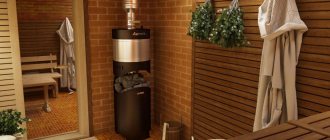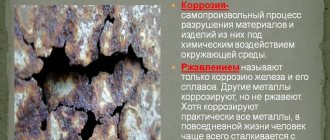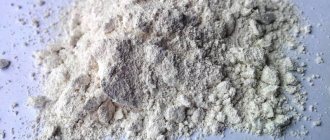Owners of suburban areas urgently need reservoirs to preserve water. As a rule, it is contained in barrels or other metal containers. Many people prefer to buy stainless steel analogues, where the coating is reliably protected from corrosion. But such a barrel is not cheap. Let's consider options for how to paint a water tank inside and out if it is ordinary metal.
Modern technologies offer excellent means that can protect metal from the effects of water and other liquids, most often these are special metal paints. Primers and enamels are offered by many manufacturers these days.
Painting metal requires certain knowledge and skills. You need to know how to paint a water container, carefully prepare the metal and perform all the work professionally and efficiently. During the painting process, it is necessary to achieve maximum adhesion of the enamel to the metal, otherwise the paint will begin to peel off under the influence of water.
Painting of metal is aimed at providing high-quality protection against corrosion. By applying paints and varnishes to the inner surface of a barrel, tank or other container, you can obtain guaranteed protection for the next five years.
Kinds
The product market provides customers with a wide selection of excellent products that protect metal products from moisture. These are products for applying to metal, primers, enamels, alkyd, epoxy, powder and latex paints.
Each type has its pros and cons. Let's take a closer look at the properties of certain materials.
Alkyd paints
The basis of the material is varnish mixed with various fillers, solvents and coloring pigments.
The advantages of paint include:
- effective protection from external influences;
- resistance to temperature changes;
- elasticity;
- long-term preservation of the original color;
- quick drying.
The main disadvantage is fragility. You will have to repaint the container quite often, i.e. waste money and time.
Powder and enamel paints
The enamel provides high-quality painting, but during application it has a very pungent odor.
Powder mixtures give painted surfaces so-called anti-vandal properties, but they are applied only with special equipment.
Latex coating
Using these paints you can form a protective coating that resembles rubber. With sharp temperature fluctuations, it stretches or contracts, which is especially important for tanks installed in country baths.
In addition to the above, latex paint:
- has no odor and is produced without the use of harmful substances;
- easy and economical to apply to the surface;
- made from environmentally friendly materials;
- does not form condensation in closed containers.
It is also important that it is much cheaper than enamels and oil paints.
Resinizing with bitumen
Resinizing a barrel with bitumen is an excellent way to protect the surface of the container from water, because unlike paint, resin does not become porous after some time of use. This product is not afraid of aggressive salts, acids and alkalis, so the barrel can be used for mixing fertilizers and fermenting organic fertilizers. When defects appear. They can be easily removed with a soldering iron.
Preparing for the water tank painting process
Before you start painting the inside of the water tank, you should do some preparatory work. Preliminary work should be carried out with special care with metal containers that have already been in use.
Without preliminary preparation, painting will be a waste of time: in hot water, pieces of paint will begin to fall off from the previously uncleaned surface.
The tank should be cleaned in the following sequence:
- Wash the container with soapy water.
- Remove all traces of rust using a rosary or an electric drill with an appropriate attachment.
- Wash the tank again and dry it.
- Treat the inside of the barrel with a rust converter, which will prevent corrosion.
- Remove grease particles, which will subsequently improve the adhesion of paint to metal. It is recommended to use solvents such as acetone, kerosene, gasoline, alcohol or solvent P 624.
Important! After treating with kerosene or gasoline, wait until the smell completely disappears!
The service life of the water tank depends on the correct implementation of anti-corrosion work.
What and how to coat the inside of a barrel so that it does not rust?
- How to clean a barrel from rust?
- How to paint it so it doesn't rust?
- Features of the processing process
A barrel made of metal is a standard attribute of many summer cottages.
Typically, an iron water barrel is not only used for irrigation, but also used as a container for showering, and also simply for storing and settling liquid. But over time, such containers begin to rust and leak. Let's try to figure out what needs to be done to get rid of and remove rust as much as possible, as well as what can be treated and how to protect such a container. And, of course, we will describe the features of the processing process.
Primer
Often, owners of country baths have a problem with barrel corrosion. They are tormented by the question: the water tank is rusting, what should we paint it with to solve this problem once and for all?
We assure you that if rust spots appear, no ultra-modern paint will help! You must first thoroughly clean the container and then prime it. Only applying a special sweeper will save you from corrosion.
According to the recommendations of experienced craftsmen, it is best to use the anti-corrosion brand GF-021. This material is characterized by heat resistance and increased strength. It is enough to apply one layer. Complete drying will occur in about half an hour.
Important! Work must be carried out with gloves, glasses and a respirator!
A properly carried out priming process will allow you to forget about the problem of corrosion for at least five years.
Cement
This is the longest method presented, but environmentally friendly and cheap.
First, prepare the surface of the container with a rough brush or sandpaper. Wash off the sanding dust under water pressure and dry the barrel. The cement is diluted with water to a creamy consistency for easy application with a brush. Cover the barrel from the inside, carefully going through irregularities, protrusions and depressions. Then comes the longest stage - drying. The barrel is turned over and placed on a container of water so that the cement hardens in a humid environment and does not crack. The procedures for applying the solution are repeated 2-3 times. After complete drying, the protected barrel is filled with water.
Choosing Modern Paint
Among modern effective anti-corrosion agents, the most popular are:
- mixture with a base of zinc powder (Anticor TsVES No. 2);
- Cetra paint, which allows the use of metal products in extreme conditions;
- enamel paints Ecocin, EP-5116 and KO-870;
- primers AntikorKhim and XC-04 V;
- paints with anti-corrosion properties of the PCV series.
Alumol and Tsinacol paints are also quite popular among buyers, as well as acrylic-urethane enamels, which can also be used to paint a hot water tank.
When purchasing, you need to read the hygienic certificate for the product and make sure that it does not contain harmful substances (for example, lead). After painting, you need to wait for the applied layer to dry, then fill the container with hot water and monitor whether the paint peels off.
Material Specifications
Mixtures based on ethyl and silicate (with the addition of zinc powder) are heat-resistant dyes and allow you to heat the water in the tank to the required temperature. In this case, the material is not subject to any changes. According to the manufacturers, their service life is seven years.
Dyes containing red lead can withstand temperatures up to three hundred degrees.
Enamels based on epoxy resin contain elements that slow down the rusting process. Chemical reactions do not occur in containers painted with them, and temperature fluctuations range from minus 50 to plus 120 degrees.
Aluminum powder diluted with liquid glass can withstand temperatures of seven hundred degrees!
Communities › DRIVE2 At The Dacha › Blog › How to treat the inside of an iron tank?
There is an iron tank with approximately 3 cubic meters, it is about 20 years old.
Used in the country for watering. After the winter, through holes formed in it (rotten). Its side wall unscrews, so you can easily climb into it. Tell me how to treat the inside of an iron tank? Maybe some kind of waterproofing (like liquid rubber) or mastic, but I'm afraid the mastic will give off a stink in the water in the summer, or should I paint it? PS maybe someone knows what the tank is from, I assume something related to missiles.
I found the old-fashioned way, what do you think:
Comments 20
I'm afraid that what was said above is correct - things are already bad here. If through corrosion has begun in places, then this container of water will not last long. If you apply mastic on top of the rust, the underneath will rot even faster. The mastic must be applied to a clean surface. You can bother, peel off the rust, boil the rotten places, prime and paint, but it’s probably not worth it.
I don’t remember the missile storage case complex 75 or 125
Red lead. but where can I find it now? Our ships were painted. Good luck.
XC-769P; KO-42; HP-799...but best of all is ALPOL...just don’t forget the preparatory measures (cleaning, dust removal, degreasing)
You can put a plastic bag inside.
Tar him. My parents’ tank has been open for about 8 years, so far it’s normal.
Weld the holes, the welding process will show how many years your tank will last. Do not touch the interior or even paint it, just cover the outside with bitumen.
so it rots just from the inside.
Well, you know what the deal is... If you start painting from the inside, then your options for painting are the following - nitro enamel, primer-enamel for rust, mastic and bitumen. I translate - in a closed small room, this whole facility stinks terribly. This means that you will need to paint in a gas mask and with an A2 filter along the way. Further, bitumen and mastic disappear, because This stuff will take a very long time to dry. And now the options: 1) painting the inside with a gas mask 2) painting the inside without a gas mask 2) painting the outside without a gas mask Choose what is cheaper and safer) Gas mask 1600 rubles GP-7, filter A2 about 900 rubles.
There is a gas mask, although I don’t know what kind of filter it is, you can buy it.
Tips for choosing colors
It is not recommended to paint tanks in bright colors of orange, red or yellow. They fade very quickly.
If the container is placed outdoors, because... the water in it is intended for irrigation; try to ensure that its color is in harmony with the overall design of the site. Experts recommend using paints that comply with the German RAL color standard.
How to protect a tank from corrosion using improvised methods
Before starting the fight against corrosion, it is recommended to comprehensively analyze the cause of the problem. First of all, it is worth getting your water tested. However, if you place water from a well or borehole in a clean transparent glass container and observe it, it is not so difficult to determine the increased iron content - an orange precipitate will form at the bottom on the second day. In this case, you will not only have to protect the tank from iron oxide, but also install a water purification station.
The second point is to choose the right rust removal strategy. If the sinks are deep and entire layers are peeling off on the walls, a major cleaning will be required using a full range of methods, including mechanical and chemical cleaning.
If the rust is simply washed off or wiped off with a rag, then you can get by with the use of chemicals.
Hot water containers
Hot water tanks are usually installed in bathhouses. This is the place where, due to the high humidity, the metal is most susceptible to corrosion. Before modern two-component enamel paints and paints and varnishes became available for sale, it was possible to paint the inside of a hot water tank with the following materials:
- aluminum powder diluted with liquid glass;
- a solution of cement and lime;
- red lead for iron.
Many consumers still use these time-tested products today.











